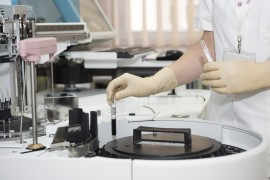A mountain of research has proved time and time again what dentists have been noticing for years: oral health is inexorably linked to overall health and wellness. Thanks to this barrage of scientific research, we now know more than ever about the mechanisms by which periodontal disease and the bacteria that cause it influence systemic consequences.
But when we look at periodontal disease from a traditional perspective, it’s hard to understand how deep pockets, abscesses, and loose teeth might impact overall health. That’s why researchers at the University of Kentucky sought to test how more advanced diagnostic tools might be used in conjunction with traditional methods for improved outcomes:
“Gingivitis is an often-overlooked disease, despite being the “Gateway” to periodontitis for a significant portion of the population. This issue has persisted for years, in part because clinical parameters along with pre-defined thresholds of inflammation and measurable tissue destruction have been used as the “gold standard” for discerning health/gingivitis from periodontitis. While very helpful, they neither provide insights into patient-specific variations within these inexact disease groups, nor do they help predict non-responders and those who “at risk” for disease progression. Thus, novel methods for identifying those “at risk persons” are needed.”
Indeed, traditional protocols cannot altogether help us address new problems like the rising numbers of patients with obesity, diabetes, cardiovascular disease, and other health complications that are walking through our doors. They also do not show us those people who have high levels of periodontal pathogens without exhibiting the traditional signs of periodontal disease.
Because saliva contains the same genetic information found throughout the body, salivary diagnostics are an ideal way to quantify important biomarkers that cannot be identified in a traditional exam:
“These biomolecules can represent the various stages of progression of the destructive inflammatory response, including IL-1ß as a proinflammatory cytokine that has effects on coupling processes in bone biology, IL-6 as a pleiotropic cytokine that communicates inflammatory signals with a number of cell types, and can elicit bone resorptive processes, MMP-8 a primary collagenase effective on both types I and III collagen and released by neutrophils that alters the integrity of soft tissues in the periodontium, and MIP-1α (also known as CCL3), a chemokine macrophage inflammatory protein that binds to CCR1, CCR4, and CCR5 receptors frequently on the surface of immune cells, recruiting them into sites of inflammation. This chemokine has also been found to activate osteoclasts, particularly related to bone resorption in multiple myeloma through these receptors. Importantly, many of these biomarkers have been detected in saliva and correlate with periodontal disease. While it is clear that these biomolecules contribute to the inflammatory and tissue destructive processes of periodontitis, a number of them have also been detected in serum associated with chronic inflammation related to systemic diseases”
The study authors concluded that salivary diagnostic testing for these biomarkers is highly useful in identifying those individuals who may require more customized care, including individuals who are at-risk of having gingivitis progress to periodontitis, those who hyper-respond to inflammation, and those whose bodies are likely already fighting a silent infection.
Genetic testing is the wave of the future in healthcare. It’s changing the way the medical community approaches disease prevention and treatment. Adapting to these new standards and utilizing this new technology will move dentistry forward into an era of more personalized care.
Source: Targeted salivary biomarkers for discrimination of periodontal health and disease(s)



